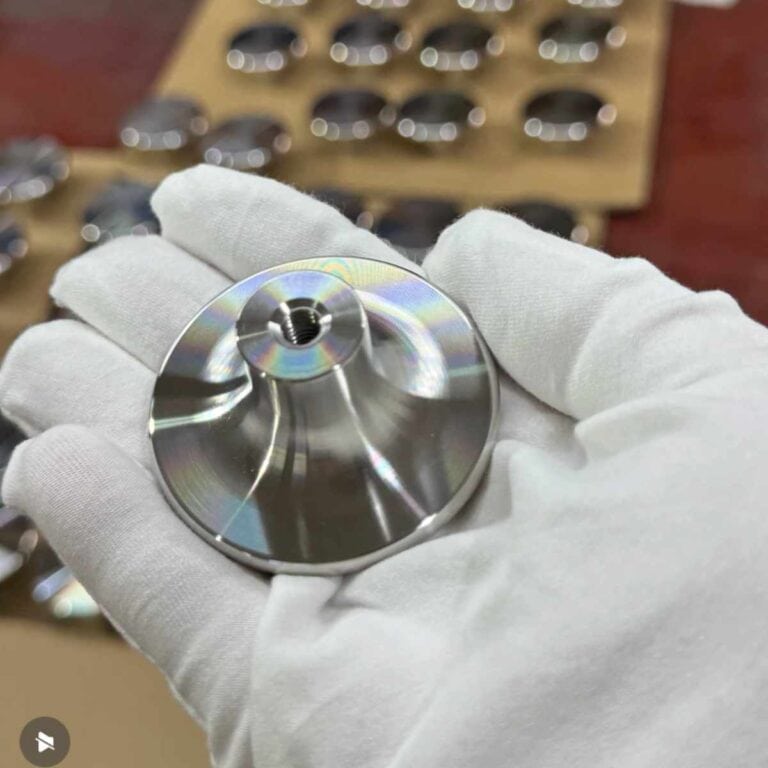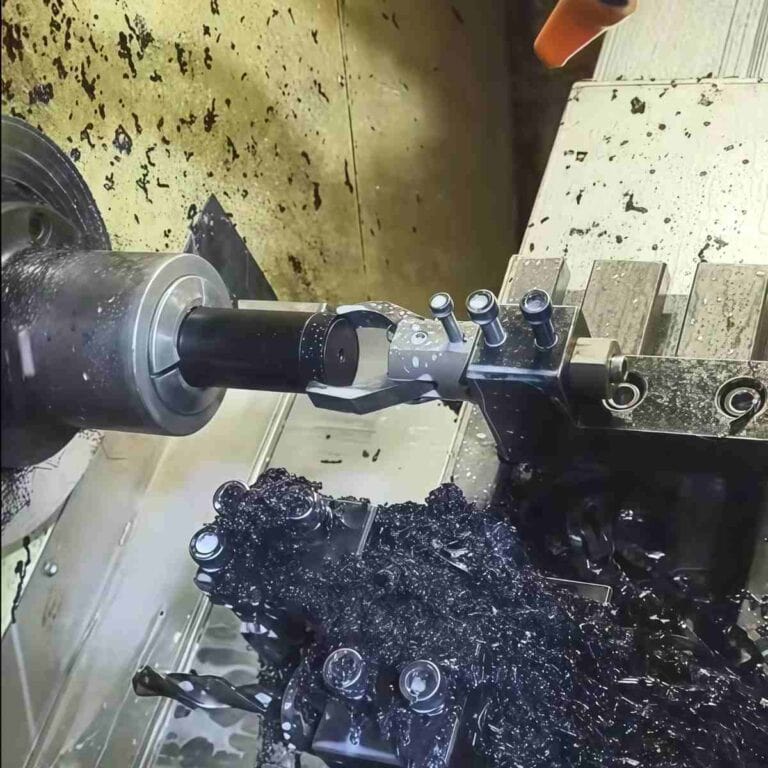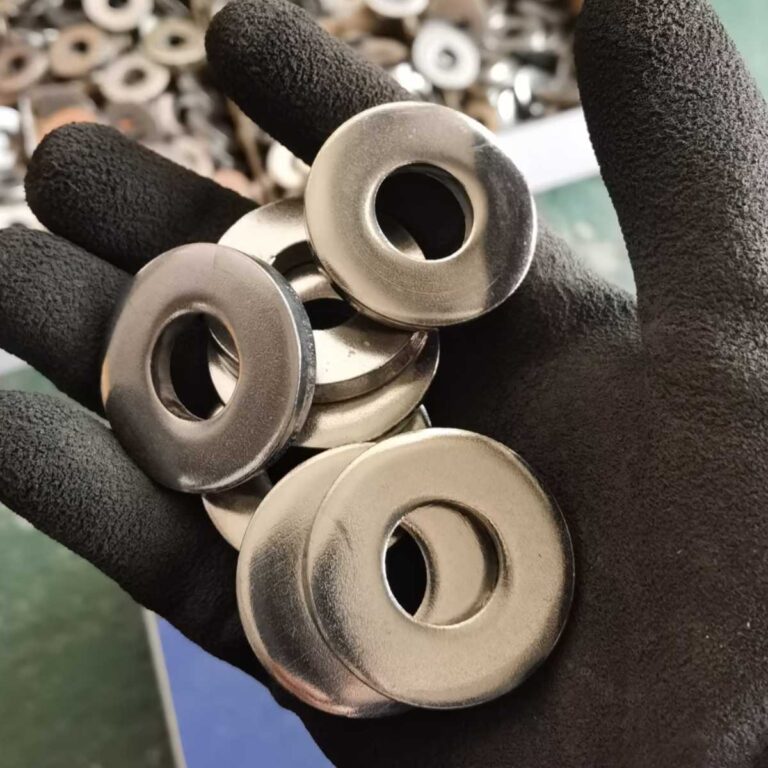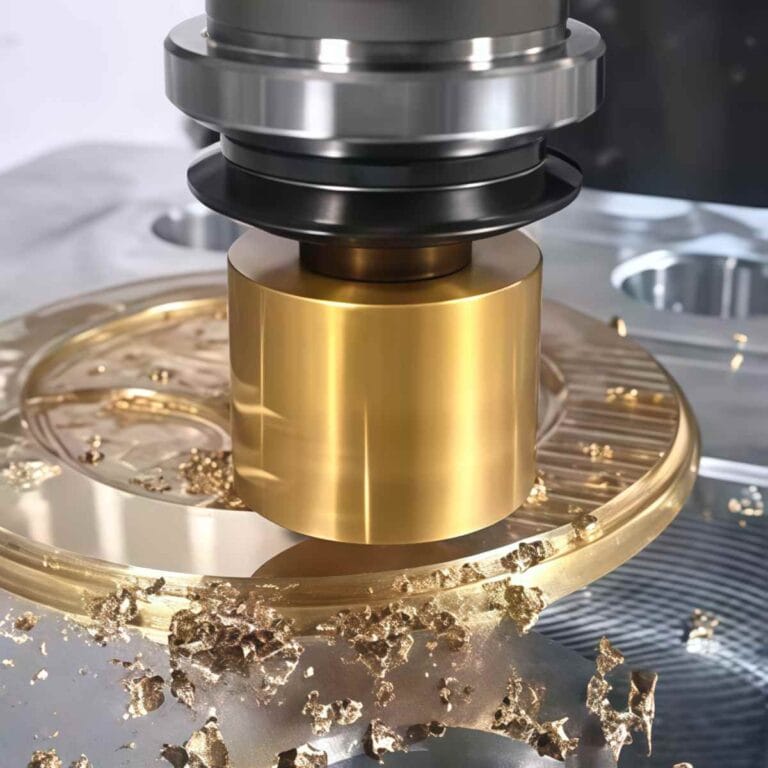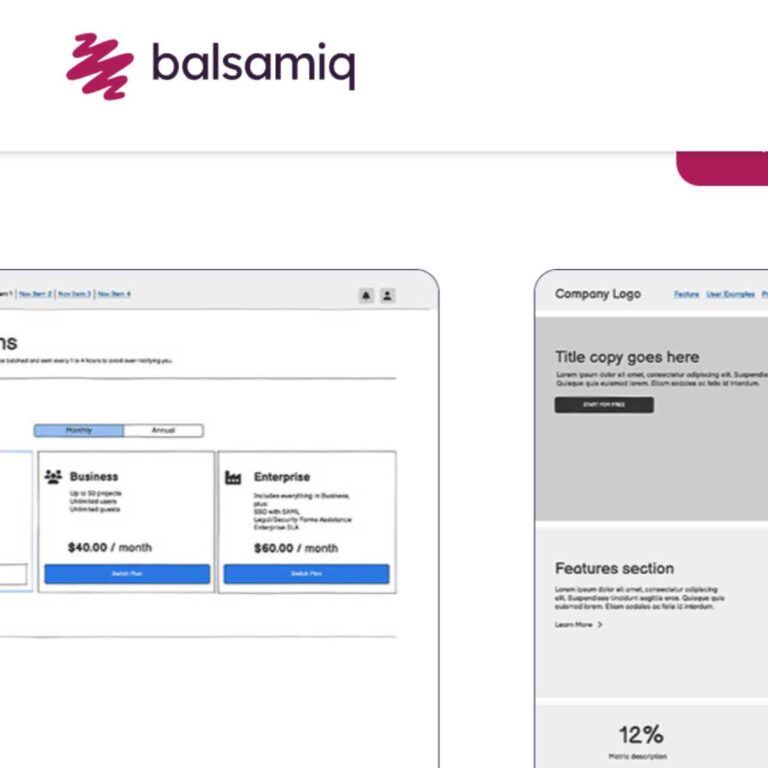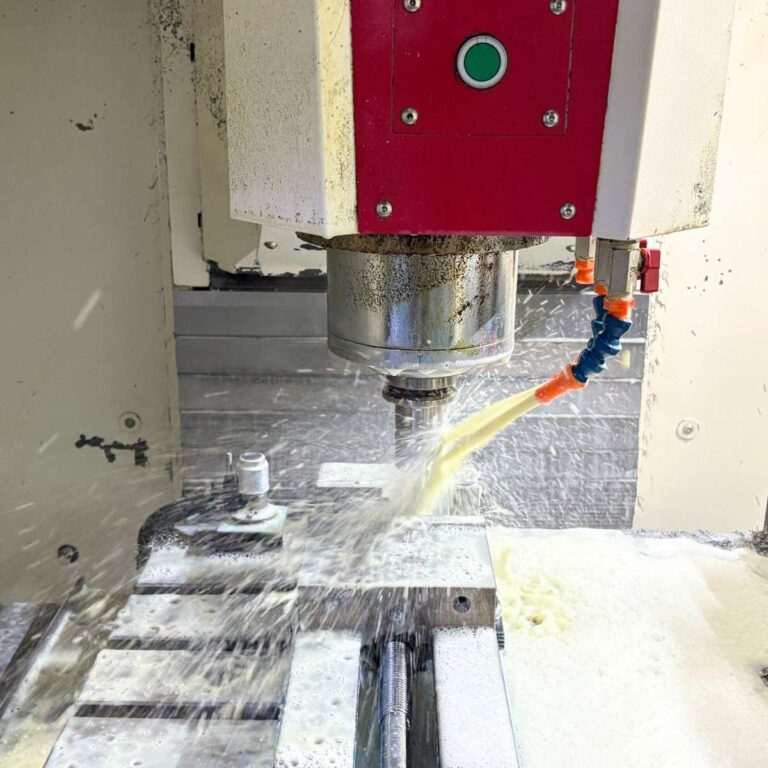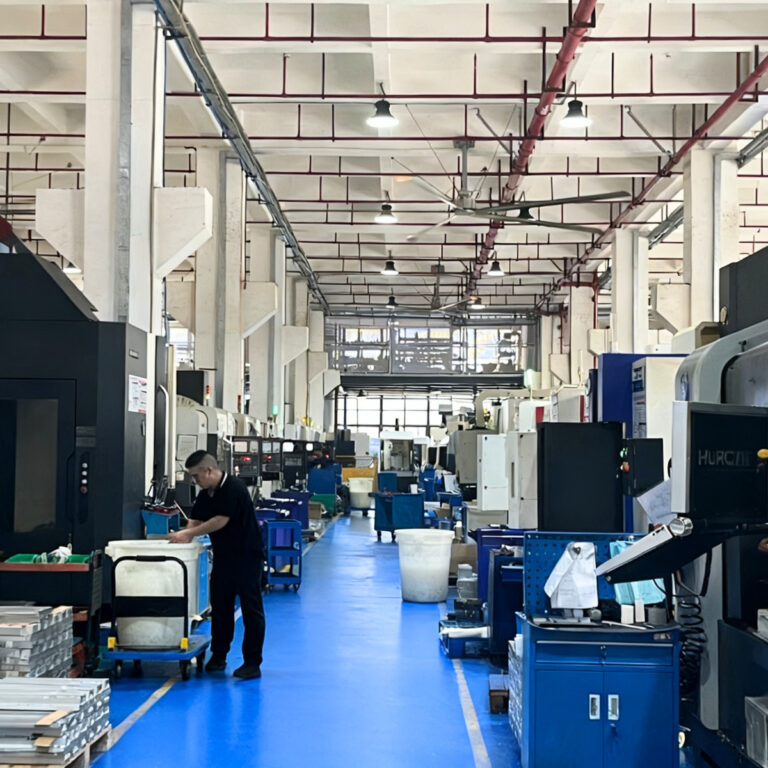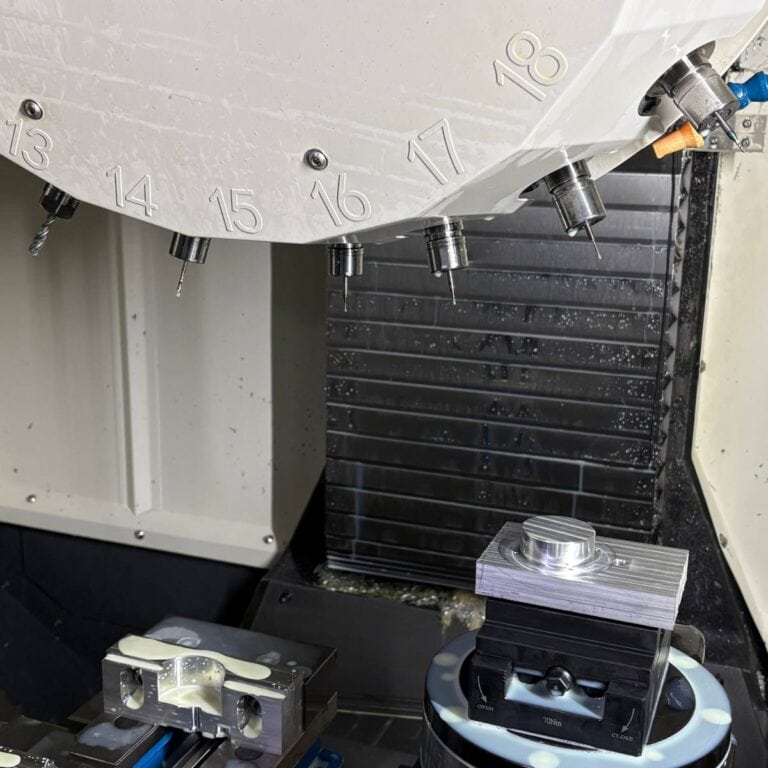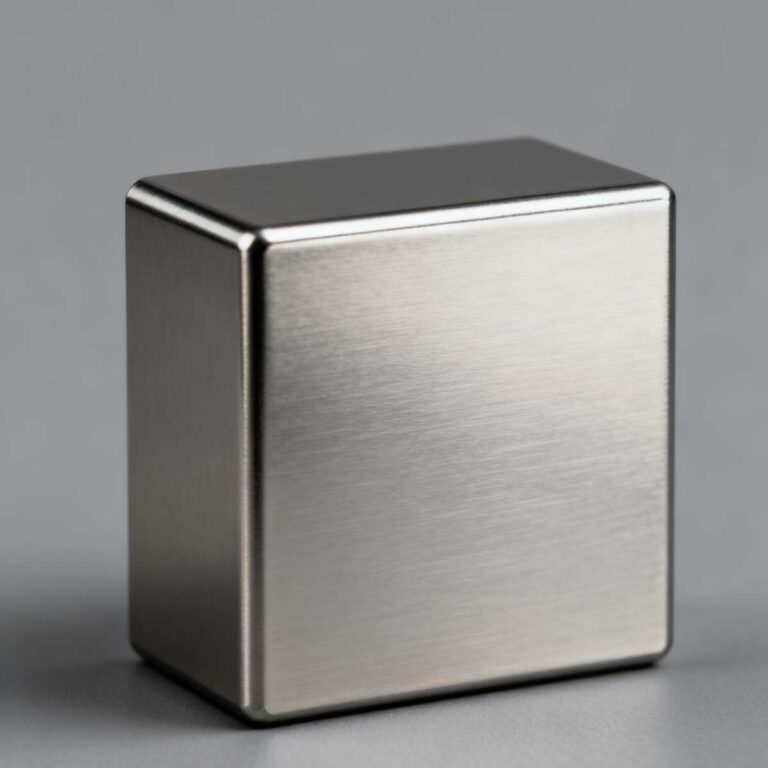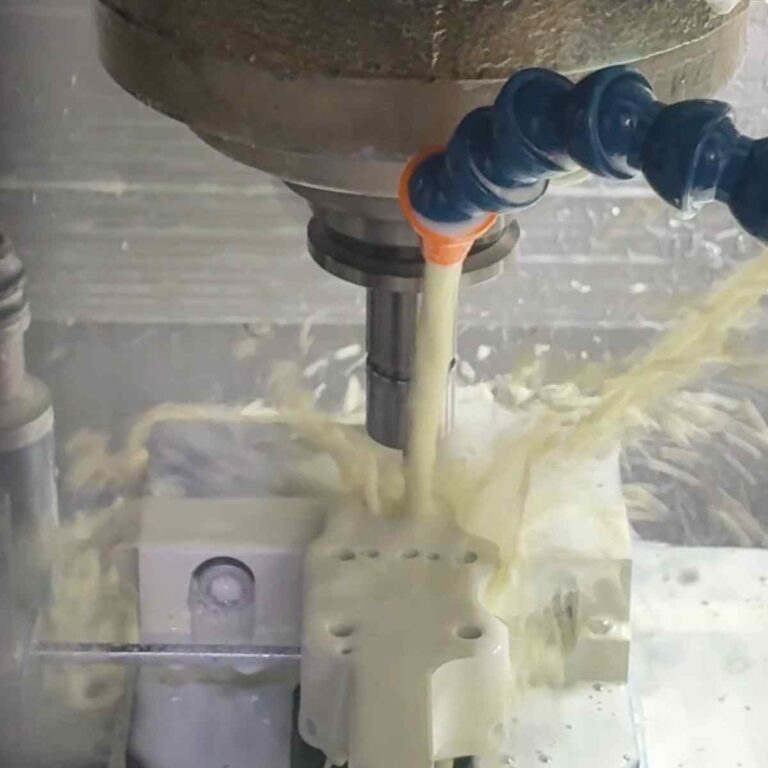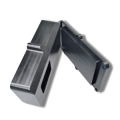In industrial design, architectural decoration, display fixtures and even medical equipment, transparent plastic has long become an indispensable material. Among them, Polycarbonate vs Acrylic is a classic comparison that frequently arises in engineering and design projects. These two materials may look similar, but their performance and application scenarios are completely different—one offers high light transmittance and suits display aesthetics, while the other boasts exceptional impact resistance and performs more like an engineering tough guy. In this comparison guide, I will systematically sort out the advantages and disadvantages of these two materials from multiple dimensions such as material basis, performance differences, processing feasibility, and application scenarios, to help you make the right choice and avoid the embarrassment of “choosing the wrong material to ruin the project.”
What Is PMMA
In daily CNC machining, we often come into contact with a material that is widely used in various transparent parts, that is acrylic, also known as PMMA (polymethyl methacrylate). As an engineer who has been engaged in precision machining for many years, I know that the popularity of acrylic is not only because of its transparent appearance, but also because of its outstanding performance in optical properties, processability and cost-effectiveness. The transmittance of PMMA can reach 92%, which is even better than glass; the density is about 1.18 g/cm³, which is much lower than ordinary glass (2.5 g/cm³), which makes it particularly popular in lightweight design .
The chemical structure of acrylic determines that it is a linear transparent thermoplastic plastic, which is mainly polymerized from methyl methacrylate (MMA) monomers. It has good weather resistance and UV resistance, and is not easy to turn yellow or brittle. Therefore, it is widely used in outdoor signs, light box shells, and car lampshades. From the development history, acrylic was first developed by German and British scientists in the 1930s and has now become a standard engineering plastic.
In actual processing, acrylic sheets are mainly divided into two types: cast sheets and extruded sheets. Cast sheets are formed by reaction molding of liquid monomer molds, have higher molecular weight and better weather resistance, and are suitable for fine processing of high-end optical parts. Extruded sheets are formed by extrusion after heating and melting, and are suitable for large-volume, cost-sensitive projects. Which type to choose depends on the specific requirements of the project for dimensional tolerance, optical performance, surface quality, and subsequent processing methods.
Understanding the basic information of acrylic is an indispensable step in material selection, design evaluation and even processing technology formulation. In the following content, I will further compare acrylic with another common transparent plastic-polycarbonate, to help you make a more accurate material selection.
What is A PC
Polycarbonate, often referred to as PC, is a high-performance engineering plastic that I frequently come into contact with in CNC machining projects. If acrylic is known for its high light transmittance, then PC is known for its toughness and impact resistance. Its impact strength can reach 250 times that of ordinary glass, and it is one of the few plastics on the market that combines transparency with high mechanical properties. Compared with PMMA, PC has a slightly lower tensile strength (about 60-70 MPa), but its elongation at break is as high as 100%, and it has extremely strong toughness, making it very suitable for use in safety protection parts, such as bulletproof glass, helmet masks, equipment housings, etc.
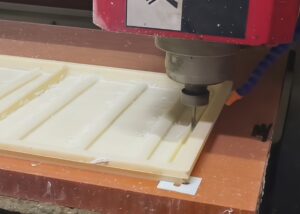
From the perspective of molecular structure, PC is a linear carbonate polymer formed by the polycondensation reaction of bisphenol A (BPA) and carbonic acid diester monomers. It is an amorphous thermoplastic material with excellent dimensional stability, heat resistance (heat deformation temperature can reach up to 135°C) and flame retardancy. It is usually classified as a “semi-structural plastic” that can meet strength requirements and has good processing adaptability. Among the many materials I have processed, PC is also one of the few non-metallic materials that can achieve a tolerance control of ±0.05mm or even higher through CNC finishing.
The application of PC originated in the 1950s, when it was launched by Bayer and General Electric (GE). Representative brands on the market include Lexan™, Makrolon®, etc. In particular, Lexan™ has almost become synonymous with polycarbonate materials and is widely used in key scenarios such as aviation cabin covers, automobile lampshades, and protective baffles. In the industrial field, the use of PC has expanded from consumer-grade products to high-precision fields such as medical, aviation, electrical, and military industries.
In general, if you need a material that is both transparent and impact-resistant, polycarbonate is a very competitive choice. In my actual work, when the customer’s design requires “high strength + high clarity + high stability”, I usually recommend PC first. Next, we will officially enter the comparison link and deeply explore the differences between PC and acrylic in terms of performance, processability, cost, etc., to help you choose the right material for your project and avoid pitfalls.
Core Performance And Attribute Comparison
In this section, I will analyze the actual performance of polycarbonate (PC) and acrylic (PMMA) in terms of light transmittance, impact resistance, heat resistance, chemical stability, etc. We will not only compare parameter data, but also combine the performance in actual applications to tell you which material is better in the game between “strength vs transparency” and “flexibility vs rigidity”.
This is not just a simple reading of the specification, but a concentration of our front-line processing experience. We hope that these comparisons can help you make more appropriate and reliable material decisions :
Light Transmittance And Optical Clarity
In my processing experience, the light transmittance of acrylic (PMMA) can be as high as 92%, which is almost close to optical glass. It is suitable for scenes with extremely high visual requirements such as lampshades and transparent display shells. The light transmittance of polycarbonate (PC) is slightly lower, at 88-90%. Although it is slightly inferior, it is still enough to meet the needs of most industrial and structural transparent parts. Both perform very well in visual transparency, but the edges of acrylic are smoother and the refraction is more natural.
Impact Resistance
If acrylic is a lightweight alternative to glass, then polycarbonate is a master at resisting impact. PC has an impact strength 10-20 times that of acrylic, and is not easily broken even when hit by a strong impact. This is why I often recommend polycarbonate for high-security applications such as explosion-proof windows and safety shields.
Density And Weight
The density of the two materials is not much different: acrylic is about 1.18 g/cm³, and PC is 1.20 g/cm³. In the project, they can basically be treated as equal weight, but the slightly heavier rigidity of PC is more advantageous in some mechanical applications.
High Temperature Resistance
The heat deformation temperature of acrylic is around 80°C, while polycarbonate can withstand continuous operating temperatures above 115°C and a maximum short-term heat resistance of 135°C. In some electronic structural parts projects I have done, PC is always more suitable for use near heating components.
UV And Weather Resistance
When exposed outdoors for a long time, acrylic is more stable and less likely to turn yellow, making it suitable for outdoor signs and sun sheds. PC without anti-UV treatment will start to turn yellow within a few months. However, PC with UV coating can greatly improve this problem, which is very common in the building curtain wall projects I have been involved in.
Chemical Resistance
Acrylic is somewhat resistant to most weak acids, alkalis, and oils, but solvents can easily cause surface cracking; PC is more stable in the face of acids and alkalis, but is also easily corroded by some organic solvents. Therefore, I will choose the material type based on the chemical exposure of the usage scenario.
Flame Retardant
PC is naturally flame retardant, usually UL94 V-2 or higher, while standard acrylic is a flammable material that will drip after burning. If it involves electrical enclosures or high temperature environments, I prefer PC unless acrylic has additional flame retardant modification.
Flexibility And Rigidity
Acrylic is hard but brittle, while PC is more flexible and tough, and is not prone to cracking even when bent. In the structural frame projects I have worked on, the elastic buffering capacity provided by PC is far superior to that of acrylic.
Processability And Manufacturability
In my machining projects, acrylic is relatively brittle and prone to chipping or cracking when cut, so I prefer to use sharp single-edged tools , with a speed of 10,000–18,000 rpm and a moderate feed rate to avoid deformation caused by heat buildup. Polycarbonate is more flexible and impact-resistant, and is not easy to break during machining, but because of its high toughness, the tool is more likely to produce sticky chips. I generally use carbide tools and use spray or air cooling to prevent the material from softening.
Cutting, drilling and polishing performance
From the cutting experience, the edges of acrylic are easier to process clearly and neatly, and even a translucent effect can be achieved directly after processing. But be careful: the hole must be expanded gradually when drilling , otherwise it is very easy to burst at the exit.
Although PC will not burst, due to its softness, the cut surface often has micro-burrs, which require secondary trimming later.
In terms of polishing, flame polishing is particularly effective for acrylic , and can achieve a mirror effect of Ra < 0.8 μm. Because PC is highly heat-sensitive, flame treatment is prone to ripples, so I use mechanical grinding or fine sand blasting more often .
How To Avoid Atress Cracking
This is a very critical point that many customers overlook. Acrylic and polycarbonate are prone to stress cracking (especially acrylic) after being subjected to internal stress or solvent erosion.
My suggestion is to perform moderate annealing before processing :
Acrylic: Heat to 80–85°C for 2–4 hours;
Polycarbonate: Temperature is about 120°C , and the holding time is set according to the thickness of the sheet.
At the same time, when screwing or gluing, pay attention to the edge stress distribution to avoid over-tightening or choosing the wrong glue.
Surface Treatment Options
Acrylic is a material that is very suitable for dressing up – I often use flame polishing to quickly improve the edge texture, and the effect is comparable to that of a mirror. It is also very suitable for dyeing, silk screen printing, and even laser engraving.
PC has higher requirements for “dressing up” – flame treatment needs to be cautious, and overheating will cause deformation. It is more suitable for sandblasting surface or transparent matte treatment with slight anti-glare function. Dyeing requires the use of special pigments, otherwise it is easy to discolor or precipitate.
In terms of CNC processing manufacturability, acrylic is suitable for projects that pursue high appearance quality and transparency, while polycarbonate is better in structural strength and impact resistance. As long as you understand their respective “tempers” and set the process parameters reasonably, you can achieve a part effect that is both beautiful and stable. In actual work, I usually recommend different processing paths and material choices based on the customer’s weight on transparency, strength or processing difficulty.
Industry Application Scenarios
Although both polycarbonate (PC) and acrylic (PMMA) are transparent engineering plastics, their applications in different industries show obvious differences. In many projects I have participated in, the choice of these two materials often depends on specific functional requirements, usage environment and cost considerations. I will start from the dimensions of multiple industries such as medical, electronics, construction, safety protection, and automobiles to comprehensively compare the performance and advantages of polycarbonate and acrylic in practical applications.
| industry | Application Examples | Recommended Materials | Reasons |
| Architecture and decoration | Lighting cover, transparent partition, canopy | PC | High impact resistance, good weather resistance, higher safety |
| Advertising logo | Light boxes, light guide panels, display boards | PMMA | High optical transparency, clear cutting edge, easy to polish and color |
| Medical Devices | Observation window, analyzer transparent cover, light guide assembly | PC | Medical grade safety, high temperature resistance, impact resistance, some models can be sterilized at high temperature |
| Electronics and Electrical | Insulation cover, LED lamp cover, panel window | PC | Good electrical insulation performance, high strength and excellent heat resistance |
| Transportation | Instrument panel cover, headlight lens, windshield | PC | Impact-resistant, shatter-resistant, and weather-resistant, suitable for outdoor and high-frequency vibration scenes |
| Household daily use | Storage boxes, photo frames, desktop protective plates | PMMA | Bright appearance, good texture, easy processing and relatively low cost |
| Mechanical equipment | Safety shield, observation window, housing | PC | Excellent toughness, not easy to break, long service life |
| Food Contact | Mixing hoods, packaging windows, vending machine windows | PMMA | With food grade certification, excellent appearance, suitable for display purposes |
| Aerospace | Instrument windows, helmet visors, cockpit covers | PC | Super strong impact resistance, light weight and heat resistance, some military certified models have flame retardant and bulletproof properties |
| Education and Research | Model cover, laboratory observation board | PMMA | Good transparency, low cost, suitable for non-structural teaching equipment |
Acrylic (PMMA) : More suitable for industries that emphasize appearance, transparency, and decorative needs, such as advertising, home furnishings, display equipment, etc.
Polycarbonate (PC) : Suitable for fields with high requirements on strength, safety and temperature resistance, such as mechanical protection, medical, electrical and aerospace equipment.
Durability, Maintenance And Service Life
In my experience of actually using and processing transparent plastic materials, one of the most common questions asked by customers is: “How long can this material last?” Indeed, durability is directly related to the service life and cost-effectiveness of the product. From scratch resistance to the convenience of daily cleaning, to the aging performance after long-term exposure to the outdoors, polycarbonate (PC) and acrylic (PMMA) have obvious differences in maintenance costs and service life.
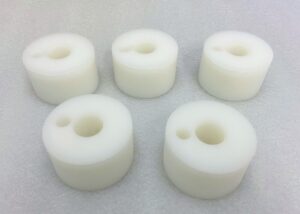
For example, in outdoor use, acrylic without special treatment may turn yellow and crack within 3-5 years, while polycarbonate with UV-resistant coating can maintain stable performance for more than 10 years. Below I will compare their actual durability performance in terms of daily wear resistance, cleaning difficulty and environmental adaptability to help you choose a more worry-free and longer-lasting material :
Scratch Resistance
Acrylic’s surface hardness is usually higher than that of polycarbonate, and it has better scratch resistance. The Mohs hardness of untreated acrylic is 3.5–4.0, while polycarbonate is only 2.5–3.0. This means that acrylic can better maintain smoothness and flatness in scenes that are easy to touch, such as display cabinets and panels.
However, polycarbonate can significantly improve its scratch resistance by adding a hard coating, and is often used in applications such as car lights and aircraft windows that require high strength and transparency.
Cleaning And Maintenance Recommendations
Avoid using alcohol, acetone or strong alkaline cleaners on both materials to prevent micro cracking or fogging. It is recommended to use a neutral cleaning solution with a soft cloth to wipe the surface in one direction to reduce the risk of fine scratches.
Polycarbonate is a soft material and should be protected from contact with sharp objects.
Difference In Service Life Between Indoor And Outdoor
Without anti-ultraviolet treatment, polycarbonate is prone to yellowing and brittleness under outdoor exposure, and its service life is usually 1-2 years. Acrylic itself has certain anti-ultraviolet properties, and its outdoor service life is about 3-5 years.
After anti-UV treatment, the lifespan of both can be greatly improved: polycarbonate exceeds 10 years, and acrylic is about 8-10 years, which is suitable for long-term outdoor display, architectural lighting and other scenarios.
summary
Acrylic surface is more scratch-resistant and suitable for applications with high requirements on appearance;
Polycarbonate is safer in high-impact situations, but requires additional protective coating;
Proper cleaning and regular maintenance can extend the life of both materials;
For outdoor applications, we recommend choosing a material version with UV-resistant coating.
Cost, Availability And Sustainability
In addition to performance, cost, supply channels and sustainability are also crucial when evaluating the commercial viability of polycarbonate and acrylic materials. Different materials vary significantly in market price, flexibility in size and color, and ease of procurement and transportation. At the same time, with increasingly stringent environmental regulations, recyclability and life cycle impact have also become important reference factors for purchasing decisions. Understanding these economic and ecological dimensions can help us make more comprehensive and rational material selection.
Material Price Comparison
From the market price point of view, acrylic is usually cheaper than polycarbonate. Take conventional transparent sheet as an example:
Acrylic sheet (PMMA) : about $2.0–$3.5/kg or $35–$50/m² (3mm thick)
Polycarbonate sheet (PC) : about $4.0–$6.5/kg or $50–$80/m² (3mm thick)
The higher cost of polycarbonate is mainly due to the complex synthesis of raw materials, higher impact resistance, and suitability for more harsh environments.
Common Specifications And Color Options On The Market
Acrylic : It has a wide range of color options and surface treatments (transparent, frosted, fluorescent, mirror, etc.), thickness ranging from 1mm to 50mm, and supports personalized customization.
Polycarbonate : Usually transparent or light gray, with fewer colored versions, a wide range of thicknesses (1mm–40mm ), suitable for industrial use. Some brands, such as Lexan™, can provide functional specifications such as flame retardant and bulletproof.
Recyclability And Environmental Friendliness
Acrylic (PMMA) : A thermoplastic material that can be recycled and reused, but is difficult to degrade and not biodegradable.
Polycarbonate (PC) : It is also a recyclable thermoplastic material, but the bisphenol A (BPA) used in its synthesis has caused some environmental controversy. Some manufacturers have now turned to BPA-free polycarbonate versions.
Overall, both have certain recycling value, but their environmental friendliness needs to be considered in combination with the application cycle and regional policies.
Brief Analysis Of Alternative Materials
In some specific scenarios, the following materials can be considered as alternatives:
| Alternative Materials | Features |
| PCTFE | High rigidity, extremely low moisture absorption, suitable for high-precision devices |
| PFA | Excellent chemical resistance, suitable for semiconductor and corrosive environments |
| PETG | Low cost, easy to process, with certain toughness and transparency |
Although these alternative materials have advantages, they are usually not as versatile as acrylic and PC in terms of cost or processability.
summary
Acrylic has advantages in price and appearance diversity;
Polycarbonate is superior in functionality and durability;
Both have recycling value, and the choice should be made based on environmental protection and budget factors;
In specific applications, more professional alternative materials can be selected according to needs.
FAQs
Which Is Better Polycarbonate Or Acrylic
I Choose Between Polycarbonate And Acrylic Based On Project Needs. Polycarbonate Offers Higher Impact Resistance (250x That Of Glass), Making It Ideal For Safety Shields. Acrylic, However, Provides Better Optical Clarity (92% Light Transmission) And A Glossier Finish. If Strength Matters Most, I Use Polycarbonate; For Display And Aesthetic Projects, Acrylic Is Preferred.
What Are The Disadvantages Of Polycarbonate
While I Appreciate Polycarbonate’s Strength, It Scratches More Easily Than Acrylic And Is Prone To Yellowing Over Time In UV Exposure. It’s Also More Expensive And Sensitive To Certain Solvents. In Applications Where Surface Clarity Or Chemical Resistance Is Critical, I Tend To Avoid It Unless Coated.
Is Acrylic Or Polycarbonate More Expensive
Polycarbonate Is Typically 30–50% More Expensive Than Acrylic, Depending On Grade And Supplier. I Often Budget Projects Accordingly—Acrylic Is My Go-To For Cost-Sensitive Applications Like Signage, While Polycarbonate Justifies Its Cost In High-Impact Or Load-Bearing Uses.
Does Polycarbonate Scratch Easier Than Acrylic
Yes, In My Experience, Polycarbonate Scratches More Easily Than Acrylic Without A Hard Coating. While It’s Extremely Tough Against Impact, The Surface Is Softer. I Usually Recommend Anti-Scratch Coatings Or Protective Films For Long-Term Use.
Does Polycarbonate Crack In Cold Weather
No, One Of Polycarbonate’s Best Features Is Its Excellent Cold-Weather Durability. I’ve Used It In Environments As Cold As –40°C Without Cracking. Its Flexibility And Impact Resistance Remain Stable Across A Wide Temperature Range.
Will Polycarbonate Yellow In The Sun
Over Time, Yes—Unless It’s Treated With UV Stabilizers Or A Protective Coating. I’ve Seen Untreated Polycarbonate Start To Yellow After Prolonged Sunlight Exposure. For Outdoor Use, I always opt for UV-resistant grades to maintain clarity.
How Easily Does Polycarbonate Scratch
Uncoated Polycarbonate Scratches Relatively Easily Compared To Acrylic Or Glass. Even With Normal Cleaning, fine abrasions can appear. I Advise Clients To Use Microfiber Cloths And Avoid Harsh Cleaners To Prolong Surface Clarity.
Is Polycarbonate More Scratch Resistant
Compared To Acrylic? No. I’ve Found Acrylic Has Better Natural Scratch Resistance. However, With A Hard Coating, Polycarbonate Can Match Or Even Exceed Acrylic’s Surface Hardness. Still, for frequent-touch surfaces, I lean toward acrylic or coated polycarbonate.
Is Polycarbonate More Sustainable Than Acrylic
Polycarbonate Has A Higher Carbon Footprint Due To Its Petroleum-Based Composition And Complex Manufacturing. However, Some Grades Are Recyclable. I Assess Project Sustainability Case-By-Case—Acrylic Is Often Easier To Reuse And Recycle Locally.
Which Is Easier To Bend Acrylic Or Polycarbonate
Polycarbonate Is Far Easier To Cold-Bend Without Cracking. I Can Shape It By Hand Or With Minimal Heating. Acrylic, On The Other Hand, Tends To Snap Unless Properly Heated. For Live Hinge Designs Or Quick Bending, Polycarbonate Is The Winner.
Conclusion
When choosing transparent plastic materials, polycarbonate and acrylic each have their own advantages. If the project has high requirements for impact resistance, safety and thermal stability, polycarbonate is a more reliable choice. When you need higher optical transparency, good
surface finish, and are cost-sensitive, acrylic is undoubtedly more cost-effective.
In actual processing, I usually recommend materials based on the customer’s application scenarios, budget and appearance requirements: for example, PC is more durable for protective covers or industrial structural parts; PMMA is more suitable for appearance parts such as lampshades and display stands.
The most important thing is that there is no absolutely better material, only more appropriate material selection decisions. I hope this article can help you gain a deeper understanding of the characteristics of the two and make wise judgments. If you have specific project requirements, please contact me and we can provide you with customized material selection and processing suggestions.

